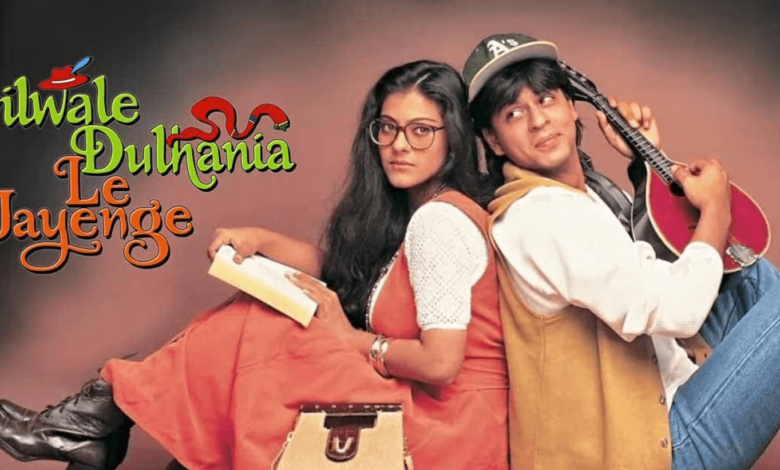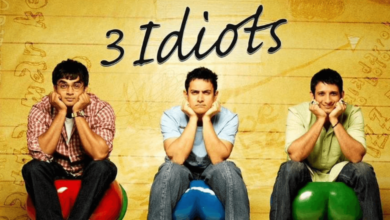Dilwale Dulhania Le Jayenge (1995): Cast, Story, and Reviews

“Dilwale Dulhania Le Jayenge” (often abbreviated as DDLJ) is one of the most iconic and beloved films in Bollywood history. Directed by Aditya Chopra, the film was released in 1995 and quickly became a cultural phenomenon. Combining romance, family drama, and elements of tradition, DDLJ not only broke box office records but also redefined the genre of romantic films in Indian cinema. The movie is often hailed as a classic love story and has continued to be a fan favorite for generations.
Dilwale Dulhania Le Jayenge Cast
The film boasts a stellar cast, with Shah Rukh Khan and Kajol delivering career-defining performances as Raj and Simran.
| Actor/Actress | Role | Notable for |
|---|---|---|
| Shah Rukh Khan | Raj Malhotra | Charming Romantic Hero, Global Superstar |
| Kajol | Simran Singh | Emotional Depth, Chemistry with SRK |
| Amrish Puri | Chaudhary Baldev Singh (Simran’s Father) | Powerful Screen Presence, Iconic Villain and Father Roles |
| Anupam Kher | Dharamvir Malhotra (Raj’s Father) | Comic Relief, Warm Screen Presence |
| Farida Jalal | Lajwanti (Simran’s Mother) | Supporting Role, Emotional Support |
| Satish Shah | Ajit Singh (Simran’s Uncle) | Comedic Role |
| Mandira Bedi | Preeti (Raj’s Friend) | Memorable Cameo |
The chemistry between Shah Rukh Khan and Kajol became legendary, making them one of the most iconic on-screen pairs in Bollywood history. Their performances in DDLJ have since become benchmarks for romance in Indian cinema.
Dilwale Dulhania Le Jayenge Story
At its heart, Dilwale Dulhania Le Jayenge is a love story that balances the modern with the traditional, and the individual with family values. The plot revolves around two non-resident Indians (NRIs), Raj and Simran, who fall in love during a European vacation, but their love story becomes complicated by cultural expectations and family traditions.
Plot Summary:
Simran, a young woman living in London, dreams of a romantic life but is bound by the traditions of her conservative Punjabi family. Her father, Chaudhary Baldev Singh, has promised her hand in marriage to his friend’s son in India. Before her arranged marriage, Simran is allowed to take a European trip with her friends, where she meets Raj, a fun-loving and carefree man.

Initially, Simran is annoyed by Raj’s antics, but as they journey through Europe, they slowly fall in love. However, when Simran returns to India, her father insists on going forward with the arranged marriage. Raj, determined to win over Simran’s family and marry her with their blessings, travels to India. There, he not only tries to prove himself to her traditional father but also respects the family’s values and culture.
The film’s central conflict revolves around whether Raj and Simran can unite their love with their family’s expectations, all while staying true to their heritage.
| Story Element | Details |
|---|---|
| Genre | Romantic Drama, Family Drama |
| Setting | London, Europe, and Punjab, India |
| Main Plot | A young couple falls in love but must navigate family traditions and expectations |
| Themes | Love vs. Duty, Tradition vs. Modernity, Family Values |
| Conflict | Raj’s determination to win Simran’s family’s approval, Simran’s arranged marriage |
The film’s blend of romance, humor, and emotional drama struck a chord with audiences, especially its depiction of balancing personal desires with family values.
Dilwale Dulhania Le Jayenge Reviews
Upon its release, “Dilwale Dulhania Le Jayenge” was met with overwhelming praise from both critics and audiences. It broke numerous box office records and became the longest-running film in Indian cinema, with screenings in Mumbai’s Maratha Mandir theatre continuing for over two decades. The film’s music, visuals, performances, and memorable dialogues became instant classics.
| Review Aspect | Details |
|---|---|
| Strengths | Shah Rukh Khan-Kajol Chemistry, Strong Emotional Core, Iconic Dialogues |
| Weaknesses | Predictable Plot (though it’s beloved for its classic elements) |
| Cinematography | Beautifully Shot European Sequences, Vibrant Indian Scenes |
| Audience Appeal | Mass Appeal, Cross-Generational Love, Family-Friendly |
| Critical Response | Universally Positive—Praised for its Romance, Strong Storytelling, Performances |
Critical Response
Critics praised Aditya Chopra’s direction and storytelling, which combined the vibrancy of Bollywood romance with emotional family drama. The film’s universal themes of love, family values, and cultural identity resonated with both Indian and international audiences. Shah Rukh Khan’s portrayal of Raj as the ideal romantic hero—charming yet respectful of family traditions—became an iconic performance.
| Critic | Review Summary |
|---|---|
| Rajeev Masand | “A timeless romance that beautifully blends love and tradition.” |
| Anupama Chopra | “DDLJ is the epitome of Bollywood romance, with heartwarming performances.” |
| The Times of India | “A landmark in Indian cinema—DDLJ continues to inspire generations.” |
Audience Appeal
The film appealed to a wide range of audiences, from young viewers enamored with the romance of Raj and Simran to older generations who appreciated the film’s respect for Indian traditions and values. “Dilwale Dulhania Le Jayenge” not only became a favorite among Indian audiences but also gained popularity among the Indian diaspora around the world, as it dealt with themes of cultural identity and family expectations, which resonate deeply with NRIs.
Iconic Dialogues and Scenes
Dilwale Dulhania Le Jayenge is filled with iconic moments that have become a part of Indian cinema’s cultural lexicon, including the famous line:
“Bade bade deshon mein aisi choti choti baatein hoti rehti hain, Senorita!”
Other memorable scenes include Raj’s humorous and flirtatious antics in Europe, the train scene at the end where Simran’s father finally lets her go, and the vibrant Indian wedding scenes.
See also: 3 Idiots (2009): Cast, Story, and Reviews
Final Thoughts
“Dilwale Dulhania Le Jayenge” is not just a film—it’s a cinematic landmark that redefined romance in Bollywood. The film beautifully captures the essence of youthful love, the importance of family, and the balance between tradition and modernity. Shah Rukh Khan and Kajol’s performances continue to inspire generations, while the film’s music, including songs like Tujhe Dekha To and Mere Khwabon Mein Jo Aaye, remain evergreen.
The film’s influence on Indian cinema is undeniable, and its legacy endures as one of the most iconic love stories of all time. DDLJ is more than just a movie—it’s a cultural phenomenon that celebrates love, life, and the power of family.

